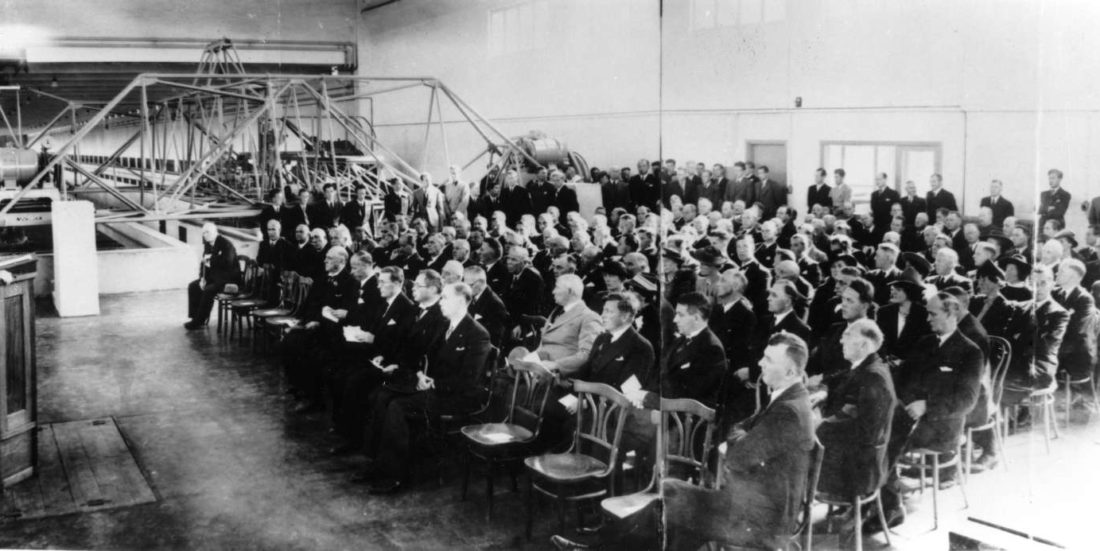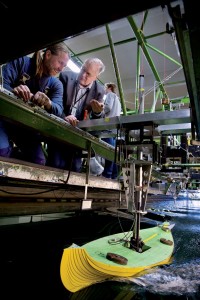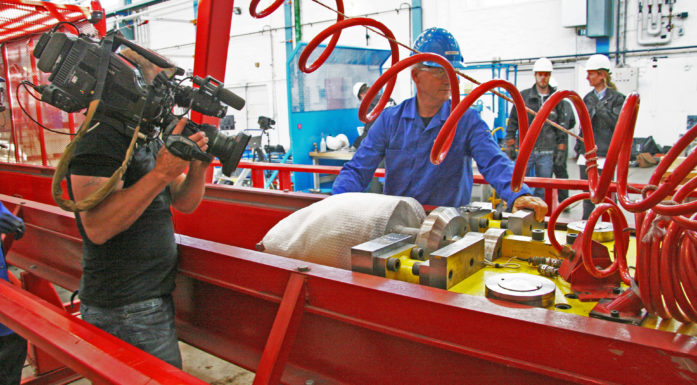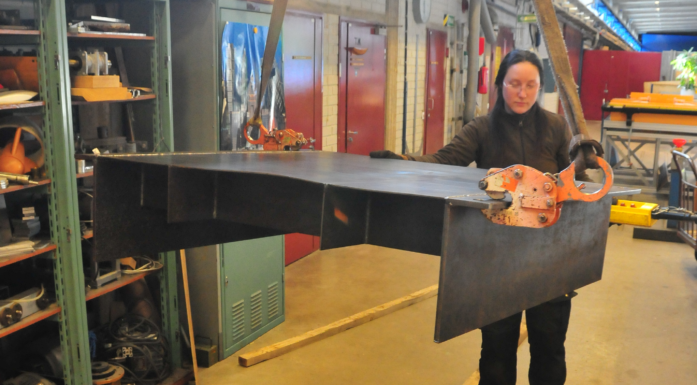The Towing Tank turns 75
NTH, Norway’s first technical university and one of the main predecessors to NTNU, SINTEF and MARINTEK, opened in Trondheim in 1910. Just three years later its scientists began to think very big – 170 metres big.
As early as 1913, NTH Professor Hans Mørch and his colleagues called for building a towing tank laboratory in Trondheim. As envisioned, the tank would be long enough – 170 metres – to allow researchers to test ship models, refine designs and to use the tank as a teaching tool.
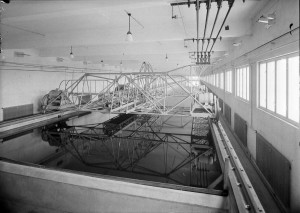
The Towing Tank not long after it opened in 1939. The tank was originally 170 metres long but was later extended to 250 metres. Photo: Schrøder, Sverresborg Trøndelag Folkemuseum
Clearly Norway, with its long history as a maritime nation, needed the knowledge that a tank like this could provide. Yet building something of this size was still a huge undertaking for a relatively small country.
26 years to build momentum
In the end it would take 26 years before Mørch’s dream became reality.
The towing tank was so expensive it involved a complicated financing package, based on a public/private partnership between ship owners and the Norwegian Storting.
And it was so big and heavy that building engineers had to locate it in just the right spot in Trondheim, where the ground was firm enough and strong enough to bear its weight.
A celebration and a world war
The Towing Tank opened on 1 September 1939, the day that Nazi Germany invaded Poland and launched the Second World War.

Early days. An unknown researcher photographs the performance of a hull model in the Towing Tank. Photo:Schrøder, Sverresborg Trøndelag Folkemuseum
Three members of the Storting who had planned to attend the opening day’s festivities had to race back to Oslo because of the German aggression.
Their three empty chairs add an air of mystery to the picture (above) of the celebratory speech held the day the tank opened.
3000 ship models, 1250 propeller designs
Over the years, the Towing Tank has played a decisive role in building the Norwegian economy.
In addition to the more than 3000 ship models and 1250 propeller designs that have been built and tested at the tank, researchers have also used the tank and other nearby testing facilities to test designs for producing oil from the North Sea.
The most famous of these was 473-metre-tall Troll A platform, which created a sensation (and set a world record as the tallest object every moved by humankind) when it was towed out to sea in 1996.
But the tank has had other uses, too. In 1943, the Nazis used the tank for food storage (reputedly potatoes) and to house a radio station in German-occupied Norway.
And in spite of its pivotal role in helping to design Norway’s maritime future, one of the first ship models to be tested in the tank was of the Gokstad, the famous 1100-year-old Viking ship that was found in a burial mound in 1880.
And researchers at NTNU, SINTEF and MARINTEK are still thinking big: They’re working intensively on a new research centre, the Ocean Space Centre, which will build on the existing infrastructure. The plans for this new centre can be seen at https://www.oceanspacecentre.no/
Want to know more? Watch a movie about the Towing Tank, its history and the future:
